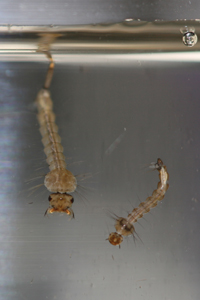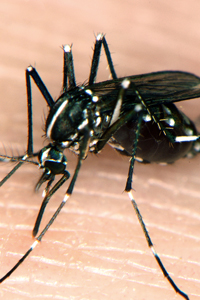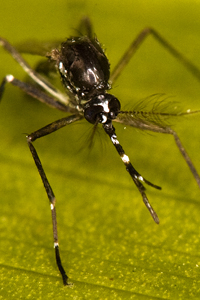The Asian tiger mosquito can be found in parts of the Pacific, America, Africa and Europe. It likes to shelter indoors and is an aggressive daytime biter that feeds on humans (indoors and outdoors), domestic and wild animals and birds.



Note: images are not to size
The risk to Australia
The aggressive nature of the Asian tiger mosquito makes is a major human and livestock health risk. Its bite can spread serious diseases such as dengue fever, yellow fever and several types of viral infections that can cause swelling to the brain (encephalitis).
What the Asian tiger mosquito looks like
An adult mosquito is about 4 millimetres in length, is black and white in colour and has a distinctive white stripe down the centre of its back. Eggs are elongated, about 0.5 millimetre in length and are dark brown to black in colour. Eggs are laid just above the waterline and can survive for up to a year in a dry state. Larvae develop through four stages before maturing into adults.
What to look for and where
The Asian tiger mosquito is most likely to enter Australia as eggs or larvae in cargo capable of holding water such as tyres, machinery, bulk steel and yachts. The eggs are also regularly found on imported lucky bamboo.
SEE. SECURE. REPORT.
If you see this pest or any other pest that you think may have hitchhiked to Australia, contain it where possible and immediately report it to the Department of Agriculture Fisheries and Forestry on 1800 798 636.
For safety, consult a departmental entomologist before handling specimens.
